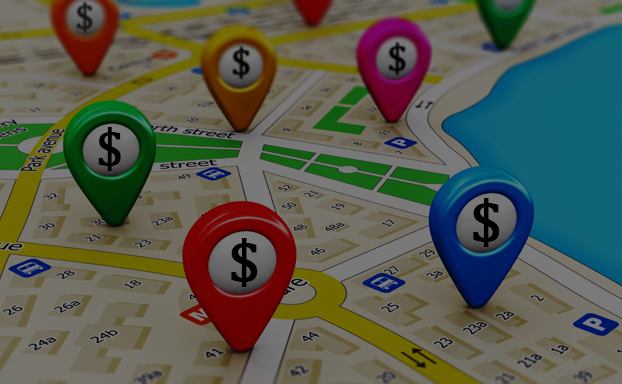In our last blog entries, we wrote about the importance of having access to high-quality location data. We covered the effects of inaccurate and poor data as well as the benefits of good geo-location data and how it can be leveraged to accelerate sales and as an asset in business decision-making. In today’s blog, we will summarize all these topics.
We are all aware of the existence of location data. Location data is all around us—it describes the identity of any place, business, point of interest, and even person. Unfortunately, less well-known is the value of location data and how it is used in real life. The role of location services currently remains focused on targeting customers with offers to drive in-store purchase, but the emphasis on advertising is starting to influence other areas of business, such as retail, health care, banking, etc. All these industries rely on location data in order to provide higher management and good solutions to end users as well as for making new business decisions. According to Location Based Marketing Association (LBMA) report, after surveying 253 major brands, 77 percent of these brands concur that geo data is indeed vital, but 65 percent of them don’t trust the accuracy of the location data they receive. Therefore, the need for high-quality location data is recognized, even in different industries, but the awareness of its accuracy is still low.
Data is a source for any solution. Before you even start developing or brainstorming a new analysis, solution, or product, you need data as an input. If you want to produce a good product, you need to support it not only with valid data but also accurate data. However, keeping your data accurate and up to date is not easy. Location data is dynamic and very hard to keep track off with all the changes on the ground. But the expense of not monitoring your data or performing frequent updates is very high, and it could have a negative impact, not just on your product but also on your entire company—it is a butterfly effect.
Good service coupled with high-quality location data will improve your overall solution and gain trust among your colleagues who are, let’s say, the first users. Furthermore, when ready, you will have to get outside of your company’s four walls. Customers’ reactions, the kind of feedback received, etc.—this is a real-life battle you will have to fight. At some point, the quality of initial data will come into focus, and, in the case of good data, it will improve your reputation and ranking among users and your clients, which will have a direct impact on your revenue. You can now imagine what the outcome would be in the case of poor location data.
In this competitive world, it is very hard to be distinguished. There is at least one other company out there providing a similar product to yours. But armed with a report reflecting your data’s health, you could be one step ahead of the others and win your client’s sympathy—and even close deals. Moreover, these reports could be used as an asset in negotiations. If you are purchasing third-party data, you could use it as an insight into the data you are buying. You don’t want to find out too late that the data you bought is inaccurate. Additionally, you could ask for an update, before you ingest it into your system, or for a discount.
Conclusion
High-quality location data is determined by optimizing the completeness, consistency, accuracy, validity, and timeliness of the data collected. By checking all those areas, companies are improving their final product, data-driven decisions, and visibility in the worldwide arena of location data-driven services. In the end, good performance, as well as bad, will be directly reflected in a company’s reputation and overall results.



